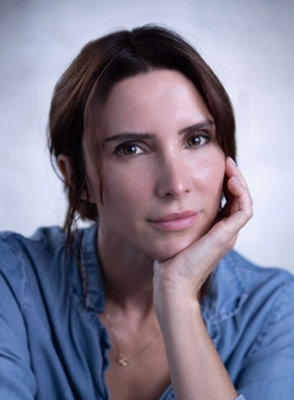Polka-Dot Brain
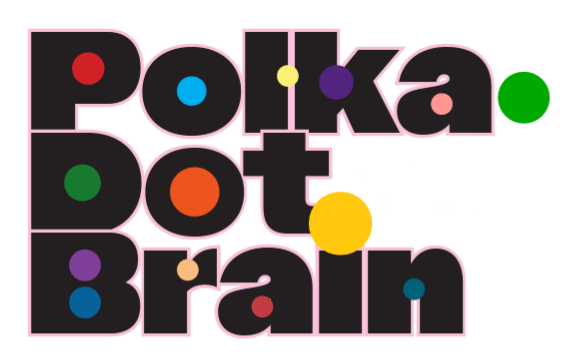
On a recent Saturday night, my husband and I exited the opera and came upon a mother and her young daughter struggling to make their way down the stairs. The girl, no older than 10, appeared to have a disability of some kind.
As we waited for the elevator together, she beamed a smile my way and nodded when I asked if she enjoyed the show. Her name was Zoey, a name we once contemplated for our own daughter. With her mother’s support, she extended her hand in greeting. Though her smile was steady, it could not eclipse the reality that there was no ramp to facilitate her exit, yet another reminder of how our world often fails to accommodate children like her.
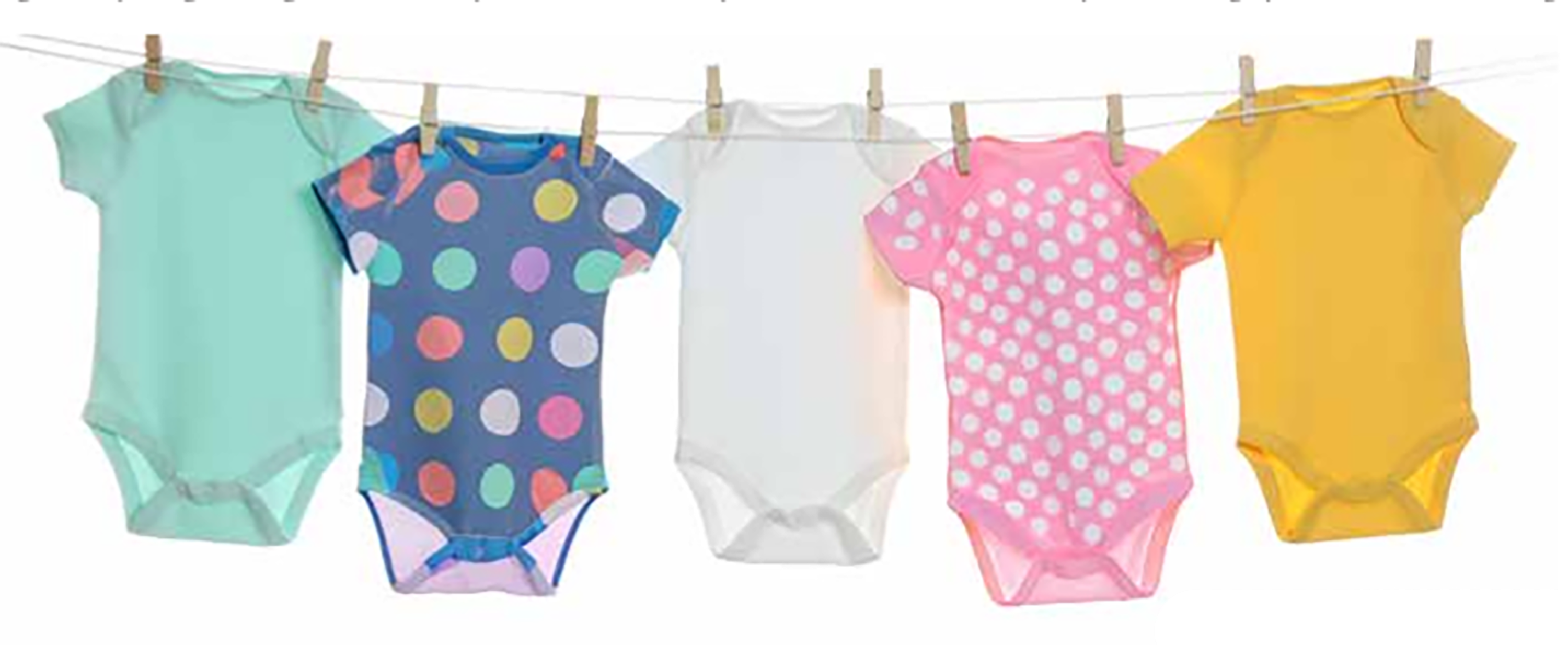
A dozen of us crammed into the elevator, our breaths held in a collective effort to avoid catching Covid, and Zoey’s head emerged from the sea of shoulders, greeting me once more with a warm smile and a wave. My heart swelled with emotions, and I battled back unanticipated tears. Discreetly, I winked in her direction before shifting my gaze. I didn’t want her to think my look was one of sadness. Quite the opposite, it was a surge of hope coursing through me.
Allow me a pause, a moment of reflection.
There is a thing that’s happening in media — an issue the late disability activist Stella Young aptly termed “inspiration porn.” It seems that many journalists struggle to portray individuals with disabilities without resorting to phrases such as “overcoming disability,” “bravery,” “suffers from,” “defying the odds,” “wheelchair-bound,” or the often misused “inspirational.” However, as Young astutely noted, “No amount of smiling at a flight of stairs has ever made it turn into a ramp. Never.”
When I speak of hope in this context, it’s a hope that springs from my personal experience — a hope not contingent on Zoey’s disability granting her a supposed ability to inspire but one firmly rooted in the genuine charm of a young girl. You see, my own daughter also is disabled. Zoey’s presence encouraged me to imagine a future, a vision born from the fatigue of motherhood, where my child might one day enjoy an evening at the opera. It’s essential to clarify this distinction.
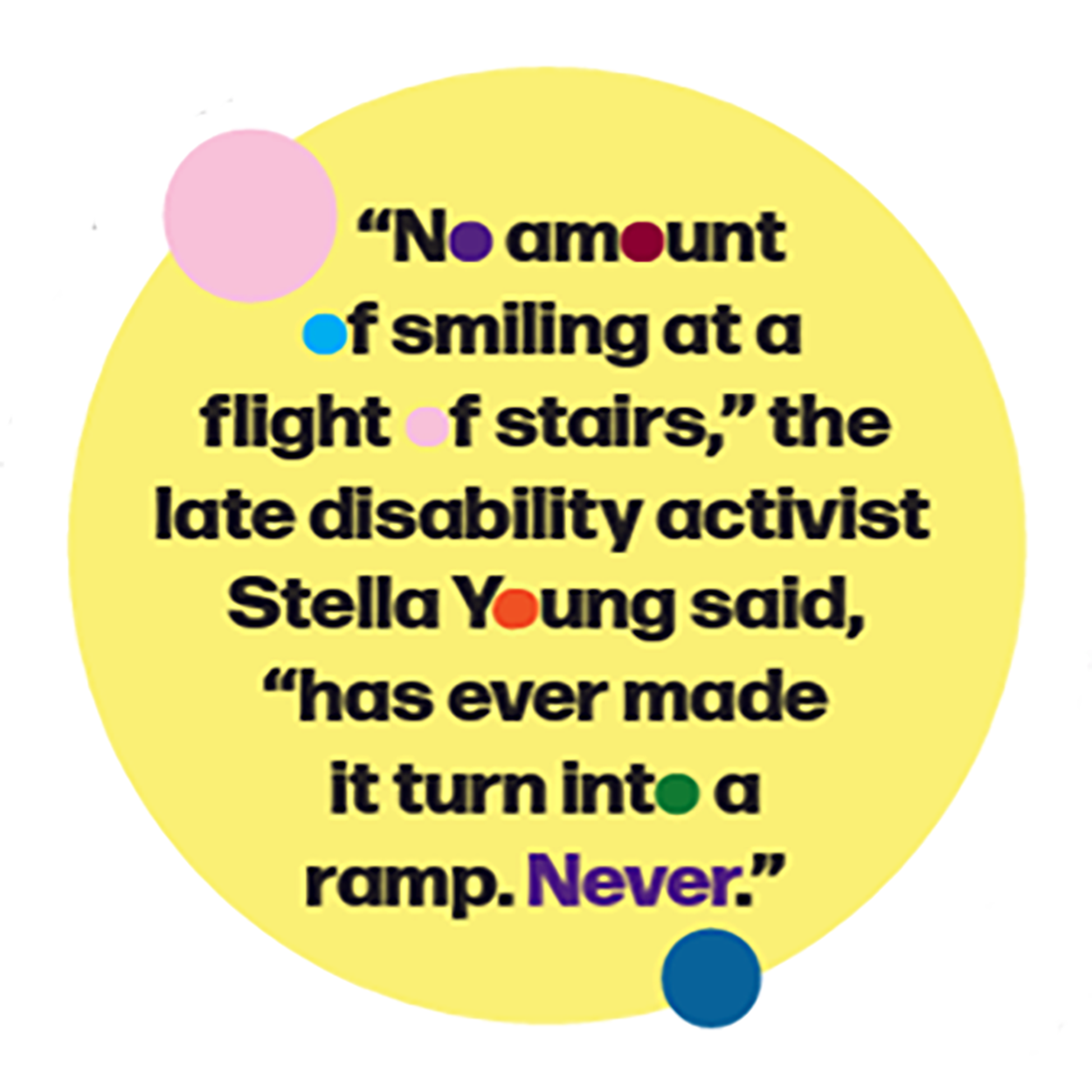
We knew something was amiss with Lou early on. At the 24-week ultrasound, our daughter was not growing as well as her twin brother in the womb. Doctors also discovered she had crooked feet, which is often indicative of a more serious issue. They offered us the option of amniocentesis to test for genetic abnormalities, but the procedure carries a small risk of miscarriage. We had to make a quick decision, knowing that the longer we waited, the greater the risk amniocentesis would be to both Lou and her twin brother.
My husband and I have always had different approaches to spirituality. Whenever he feels something is off, he searches for a deeper, more profound reason. A persistent sore throat may be attributed to unsaid words or unacknowledged emotions, while I, being more of a pragmatic individual, point out the obvious: There is likely a common cold making the rounds. In my youth, discussions of medical issues over dinner were commonplace because both my parents are physicians. Brain cancer, gastric tubes, could you please pass the bread? It was no surprise then that when faced with the option of an amniocentesis, I was prepared to ask the tough questions. I needed answers. What would happen if something was wrong with our daughter? Then you could choose to terminate the pregnancy. You mean, abort the girl? Sadly, it would have to be both. I remember feeling numb. Our baby boy was healthy and lively, kicking and waving during every ultrasound. And even though Lou wasn’t as active, I could feel her presence in her own way. My husband stood by me throughout it all, never pushing me toward one decision or the other. My mother, a statistician and doctor in epidemiology, advised me to trust my instincts.
As I sank into the warm embrace of my bathtub that evening, my mind drifted to the weighty decision looming ahead. Had it been a single child, the answer would have been simple. But the danger posed to our healthy son was too significant to ignore. And what if we discovered that Lou carried a severe genetic disorder? Could I truly go through with terminating the pregnancy? The thought was too overwhelming to bear. But what if her condition leads to a lifetime of unbearable pain and suffering? As I focused on the sensation of each droplet of water hitting my skin, a little girl appeared before me. She wrapped her tiny arms around me and whispered, “Everything will be all right, Mama.” I questioned whether the vision was my subconscious, conjuring reassurance, or if it was my child’s consciousness reaching out to me. Most likely the former; to this day, I’m still uncertain. Regardless, the decision became clear. We would not go through with the amniocentesis.
It took me three long years and countless miscarriages to conceive my twins. During that time, I attended many baby showers, all while secretly grieving my own losses. One particular affair stands out in my mind, though not for reasons worth celebrating. It was a gathering of well-meaning and self-professed spiritual women who burned sage, laid Pendleton blankets, and exchanged placenta recipes. I had so many questions but stayed my tongue. Better a sore throat than a headache.
The wife of my husband’s acquaintance hosted the party, and they had even enlisted the services of a white shaman, though the purpose of his presence evaded me as well. They spoke about an unborn infant as if they were an all-knowing and influential creature wrought from the cosmos who meticulously picked their mother. I couldn’t help but envision a neonate donning a suit and horn-rimmed glasses, perched at a desk on a desolate planet, stamping papers and stacking them to an evergrowing pile before declaring, “Next.” It all seemed rather interesting, or at least entertaining, until it wasn’t.
I found myself standing amidst a small group of women, sipping my regrettably virgin sangria while they shared stories of a friend’s latest miscarriage. Then they turned to me, the only one present without a child, and inquired whether I wanted any. I admitted to our struggles, and they all nodded in agreement when a woman I barely knew declared that it would happen when I was ready, adding that women often miscarried when they weren’t. I was left with nothing to say, grappling with the implications of what she had just conveyed as they moved on to the topic of co-sleeping. Had she just blamed me for my losses? Suggested that I didn’t truly want a child, which was why I kept losing them? Such easy, damaging words, offered with a brazen confidence and the sweetest of smiles. As I surveyed the women surrounding me, I couldn’t help but ponder if they grasped the danger their views posed to other women, including themselves.
Attending the opera is not a regular pastime for my husband and me. In fact, this was our first time together for one. We were invited by kindhearted friends who had spare tickets, and after three years of pandemic-induced social hibernation and the challenge of having twins, we had only recently begun to venture out into the world again. We hadn’t even bothered to research the performance we were about to see, for who had the time or energy for that? We simply deemed the opera as a safe way to reenter society. As it turned out, we were wrong.
We were viewing a production of Pelléas and Mélisande, a work of art that was indeed stunning but also soporific and dismal, with muted half-tones set against a backdrop of child abuse. Earlier that day, I had come across a New York Times article highlighting the alarming statistic that children with disabilities were four to 10 times more likely to be abused than those without disabilities. As I watched the tragic story of Mélisande unfold, my distress deepened, knowing that my daughter was soon approaching preschool age and we were in the process of selecting schools for her. If this could happen to someone like Mélisande, what would happen to a neurodivergent child who couldn’t even tell us when she was hurting? This was not the lyrical evening I had hoped for. I blame my husband for this mishap. He knows I never read reviews and should have anticipated I wouldn’t, but because this opera is French, and I am as well, he assumed I would be familiar with it.
As the elevator arrived at our parking level and its doors parted, my throat remained constricted with emotion, and I worried that any words I spoke would unleash the tears I held back. Thus, I merely turned to my newfound friend and bid her farewell with a wave. My husband spoke up, “It was nice to meet you, Zoey.” As the elevator doors shut once more, Zoey responded with a crooked thumb up, “You’re doing a great job,” she said.
My husband and I exchanged a look. Did she know? Perhaps she did.
In the weeks leading up to the global quarantine of 2020, the twins made their entrance into the world at 34 weeks, delivered via an emergency C-section. The condition known as preeclampsia, brought on by Lou’s failing placenta, placed my life in peril. But the true test came when Lou was whisked away to the NICU immediately after birth. As I lay on the surgery table, I recall ordering my husband to follow her. For a grueling 48 hours, I was denied the sight of my newborn child. Would she be able to breathe on her own? Did she know I didn’t abandon her? How small was she? Did she even have eyelids? My mind raced with all the things that could go wrong, fueled by drugs and the worst and oddest scenarios I had read on WebMD about babies born with crooked feet.
If not for my newborn son, Marlo, by my side, I might have lost my sanity entirely. He was my rock, healthy and perfect in every way. After 15 long days, the tiny bundle that was Lou was finally released from the NICU, and all 4 pounds of her came home. But the cost of her care had left us reeling. The bill came to a staggering $176,000, a brutal reality that made us acutely aware of how lucky we were to be insured and have access to medical care. Despite our supposedly excellent insurance, we were still hit with a bill totaling over $12,000. It was a stark reminder of the high price of life, of the fragility of our existence.
Had we not been insured or had we heeded the counsel of some friends and attempted a home birth, the outcome could have been much different. Lou, Marlo, and I might not have survived to see another day. It was unsurprising to learn later that the United States has the highest maternal mortality rates in the developed world. It is a tragedy that such a wealthy nation cannot provide adequate medical care for all its citizens.
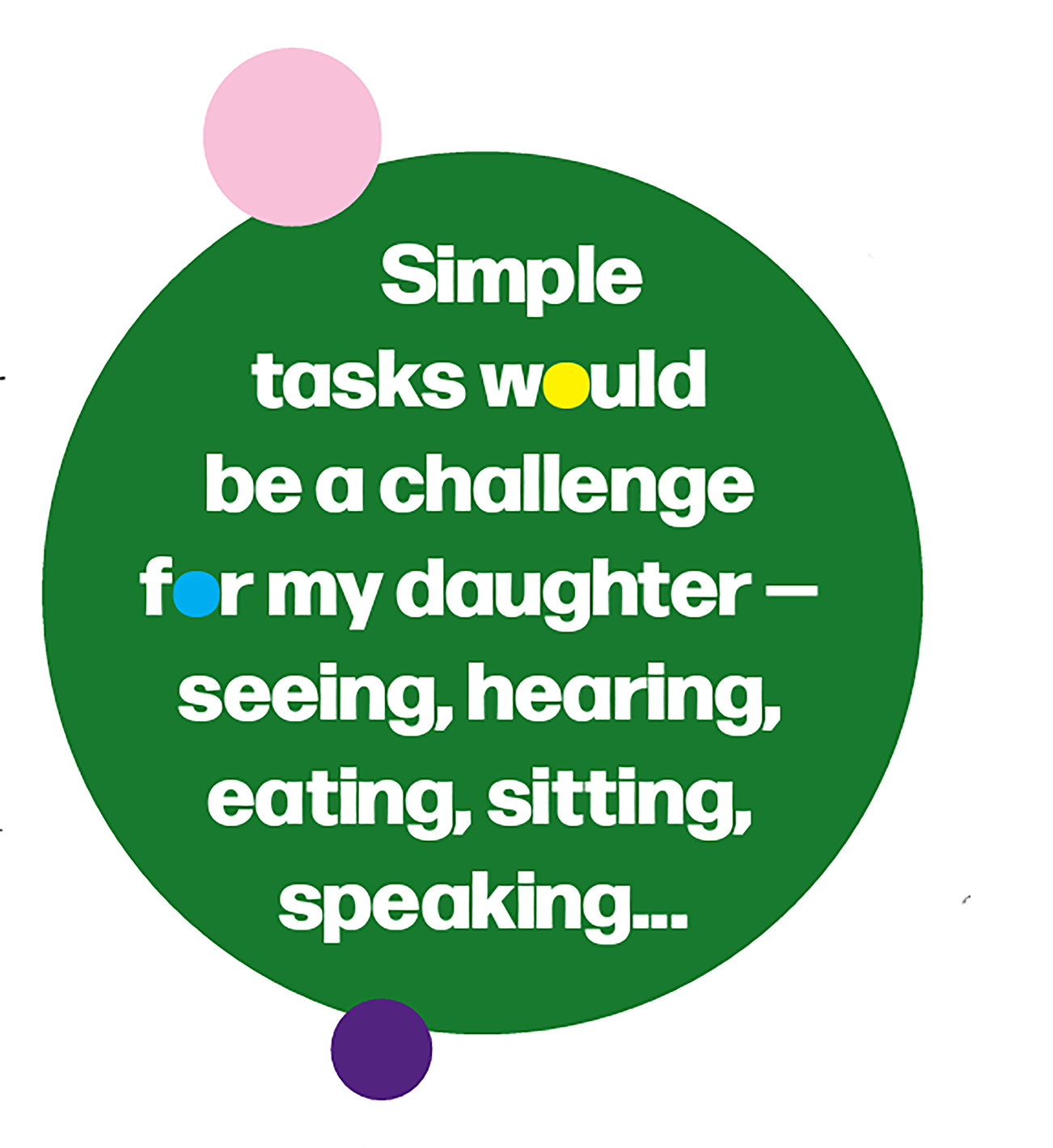
That initial bill proved to be only the first in a long and trying journey. After two hospitalizations and a full year of uncertainty, Lou was finally diagnosed with cerebral palsy, a condition that affects the neurological functions that control movement, balance, and posture. A condition that would not have been revealed by the amniocentesis. The cause of CP in most children is unknown, although it is typically linked to perinatal strokes or placenta deficiencies. The neurologist showed me an MRI of Lou’s brain, and all I saw were polka dots, a maddening inscrutable pattern.
I was relieved to have a diagnosis. It gave me something concrete to work with, a framework to build a plan around. Through Lou’s trials, I gained a deeper appreciation for the complexities of the human body and mind. I learned about the brain’s remarkable plasticity and how Lou’s lesions would necessitate the rerouting of countless neural connections. Simple tasks that most of us take for granted would be a challenge for my daughter — seeing, hearing, eating, grabbing, sitting, standing, speaking…. I had never realized that speaking required the coordinated use of more than a hundred muscles, a humbling revelation that put Lou’s daily struggles into perspective.
It is a shameful truth that we often fail to see what is right in front of us. Children with CP, the most prevalent motor disabilities in childhood, are a prime example. One to four children out of every thousand are affected, yet their challenges often go unnoticed by those who do not live with the condition.
It wasn’t until my daughter was diagnosed with CP that I genuinely noticed kids like Lou and Zoey, and I regretted not seeing them earlier. These children are frequently marginalized and forgotten, and when people do notice them, it’s often to make themselves feel better.
I don’t know what it feels like to be disabled, nor do I pretend to understand how it feels. But like any disabled person, I’ve spent my life grappling with insecurities and trying to figure out who I am rather than who society thinks I am or should be. As a parent, what I know is that it is our society that is not equipped for disability and not disabled people that are not equipped for society.
Lou, like Zoey, faces countless challenges in navigating a system that provides no road map for children like her. Advocating for the treatments and services she needs requires tireless research, paperwork, medical evaluations, and testing. Perhaps the most challenging thing is that for parents to get those services, you have to put the worst parts of your kid forward all the time. It is a lonely and exhausting journey that requires tenacity and an endless supply of coffee. I cannot say with certainty whether I would have talked to Zoey if my daughter had not been disabled. But I can say with conviction that we all have a responsibility to open our eyes and see those who could be facing challenges. Only then can we work toward creating an inclusive society supportive of all individuals.
As a mother, I know all too well the doubts that can creep in, particularly after one of Lou’s difficult therapy sessions or a frustrating call with an insurance provider. In these trying moments, the enormity of the future can feel overwhelming. But then Lou will wordlessly grasp my face in her tiny hands and press her forehead against mine, locking her gaze with my eyes as if saying, “Everything will be all right, Mama.” And somehow, I know it will.
My husband took our fortuitous encounter with Zoey as a sign, a wink from the universe that we were on the right track. And I must confess, there was a certain comfort to be found in that thought. I do not regret my decision to forego consuming my placenta, nor do I believe in the notion that unborn children have some say in who their parents will be. However, when it comes to matters of the heart, some mysteries defy explanation.
A few months back, my then 2-anda-half-year-old son drew a portrait of his twin sister and pointed to a black scribble at the top of her head, declaring it to be her “booboo in her head.” My heart ached at his innocent observation. So, I picked up a handful of brightly colored pencils and began to stipple the area with dozens of confetti-like polka dots, explaining that it looked more like that. My son’s reaction was one of wonder. “Wow,” he exclaimed, “Lou-Lou’s brain is beautiful."

